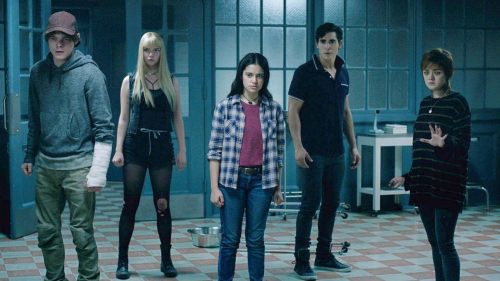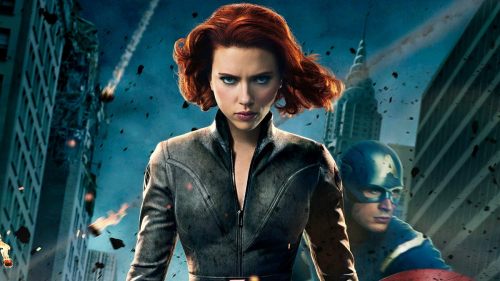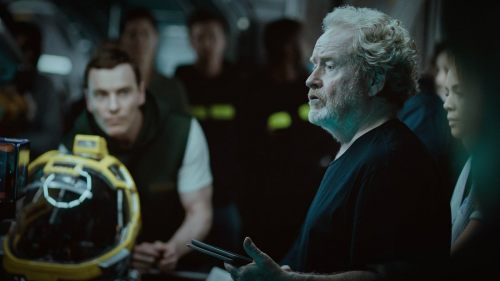RALPH BREAKS THE INTERNET: Persistence of the Princesses
If there’s one assumption you can make in animation, it’s that virtually no scene will be the same at the beginning and end of the production pipeline. The initial concept for a scene is typically tweaked and refined so many times that it might not look the same a month later, much less in the final movie.
Ralph Breaks the Internet doesn’t just have a scene that breaks that pattern. Its exception to the rule is more or less the cornerstone of the film’s entire public image. (At least so far.) You’ve seen it: The encounter where Vanellope von Schweetz barges into a dressing room full of all the Disney Princesses.
According to co-writer Pamela Ribon, the Princess scene is very nearly the same now as it was when she first wrote it down a couple years ago.
At a press event for Ralph Breaks the Internet, Ribon explained that the first inkling of Vanellope as a Disney princess came while working on Moana in 2014. “I was also thinking at the time, why isn't Vanellope canon [as a princess]?” Fast-forward to 2016, after Zootopia was wrapped, when story meetings for the Ralph sequel honed in on the fact that “we knew that we'd like to do a scene that was meta… it would be fun to have a scene of Disney poking a little fun at itself.”

Co-writer (and voice of Snow White) Pamela Ribon.
Having started with wondering about Vanellope joining ranks with the likes of Pocahantas, Merida, and Belle, the idea seemed pretty obvious. “What if Vanellope met all of the princesses?” Going viral is a big story point in Ralph Breaks the Internet, because after an ignorant act involving frenzied eBay bidding, the characters need to make money. Going viral seems like the ideal way to earn cash. “In this version,” Ribon explains, “we thought maybe Vanellope was going to go viral. I thought, well yeah, if she met all the princesses that might break the Internet.”
The viral concept was less important than the simple idea of a collision of characters. “I started thinking,” Ribon recalled, “if she met all the princesses, I assume the first question will be ‘what kind of princess are you?’”
Cue a mad dash drafting script pages featuring not just the major beats of the scene, but much of the specific dialogue that is now final. If the thought of any scene making it through the animation process intact sounds unlikely, Ribon has receipts – texts bouncing ideas off a friend, original notes and pages, and rough readthroughs, where she voiced all the characters.
Some things changed. The idea of Vanellope as the one who goes viral ultimately went to the wayside. That meant that a character accompanying her through this scene in early drafts — Yesss, a social media queen voiced by Taraji P. Henson — got the boot. But the core setup and dialogue didn’t change.
Ribon had one major thought while writing dialogue about Princesses being kidnapped and enslaved, and actions like Cinderella turning a glass slipper into a shiv: “I'm either going to be fired or this might be a big deal.” But people liked the scene. Everyone liked the scene! We don’t know how it plays in the context of the film, but excerpted, it is expertly crafted to balance self-awareness and a faithful(ish) take on the characters.
Ribon’s account suggests the process actually moved smoothly, from storyboarding through to rough tests and more final production stages. From a writing perspective at least. On the design side, there were generations of not-entirely compatible character models to deal with. Pulling all the characters into the same 3D animated space meant establishing some uniformity, without scrubbing away individual traits of each character. Art Director Ami Thompson realized, looking back at the original Cinderella, that “[Cinderella’s] ears are completely hidden underneath the hair band. So we were like, oh my gosh, where do her ears go?”

Art director Ami Thompson.
Mark Henn, who was the supervising animator for the princess characters in films like The Little Mermaid, Beauty and the Beast, and Mulan, came in to consult on movement, so that the personal tics of each character were preserved. And in the end, the voice actors from the original movies, and women like Jennifer Hale, who has voiced Cinderella in projects since the 2001, showed up to play the scene. Many also gave useful notes on animation and personality.
(Adriana Caselotti, who voiced Snow White, passed away in 1997. So Pamela Ribon’s Snow White performance, while polished up from the original scratch track, remains in the movie.)
As she talks us through the history of the scene, Ribon is excited, proud, even incredulous. She sounds like she’s as surprised as anyone that a sequence passed through the entire process without major change. It’s like a species that got it right from day one and got to skip the whole evolutionary line — a shark in a tiara.



